
Journal
#5
The taste of freedom: The legacy of the revolution in Mexican coffee
Mexico is on the northern edge of the Coffee Belt, the equatorial region where coffee is most easily grown. Coffee production is limited to the south of the country, with the southernmost state of Chiapas being the biggest producer, responsible for 40% of the country’s total coffee production. Chiapas shares a border with Guatemala and was a part of the country until Mexico gained independence from Spain. Like their neighbors, the majority of residents are indigenous people of Mayan descent, and culturally they are closer to Guatemala. The flavor profile for Mexican coffee is also close to Guatemalan, but when it comes to quality, the difference in political policies between the two countries has had a significant effect.
The positive impact of the Mexican Revolution
Coffee came to Mexico before independence from Spain. The Spanish followed Columbus to the New World, conquering Mexico and forcing the indigenous people to mine silver and the country’s rich mineral deposits. Then, when these resources dwindled, the conquerors turned to agriculture, forcing the people to work the land. The traditionally communal indigenous people farmed corn on land share with the community. However, the dictatorship that took over from the Spanish colonizers confiscated the communal land and redistributed it for coffee and sugar cane production.
The indigenous people took up arms and began the battle to reclaim their land and their freedom. This was the Mexican Revolution of 1910. Seven years before 1917’s Russian Revolution, the people of Mexico were already standing up to the unfair social strata. The leader of this revolution was Emiliano Zapata. He was later assassinated by government forces, but he remains an iconic figure in Mexico and his legacy lives on.
The revolution was successful and from 1914 there were several agrarian reforms.The indigenous farmers were freed from the labor laws and land was redistributed back to the communities. Some of these farmers chose coffee production, and in 1958 the government formed the Mexican Coffee Institute (Instituto Mexicano del Café), referred to as INMECAFE, to help support the smallholders. In 1973, the scope of the institute expanded to include technical assistance and financial credit for producers. This led to rapid expansion in coffee production. By the 1980s, 35% of agricultural produce in Mexico was coffee.
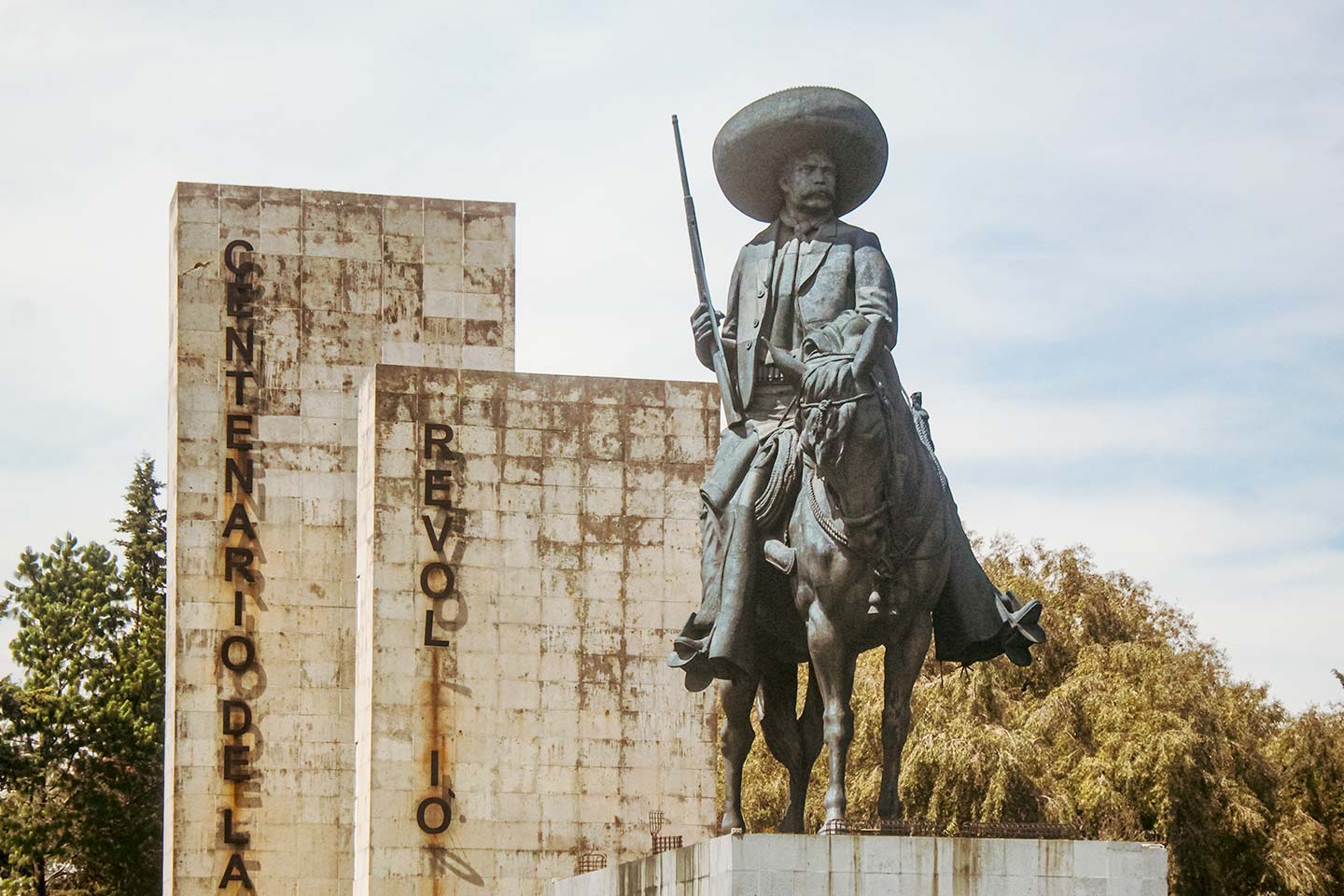
After the Mexican Revolution, the government policies were distinguished by a people-centric approach. The political party who advanced this policy was the contradictorily named Institutional Revolutionary Party (Partido Revolucionario Institucional or PRI). The name represents the party’s promise to institutionalize the ideological principles of the revolution. It is the largest political party in Mexico and after being formed in 1929 held power for 71 years until it was displaced in 2000.
This long-term monopoly on political power allowed the PRI to create a stable regime. With financial and agricultural groups providing the power base for the party, they were able to stay in power so long because of the practical benefits they brought the people, especially in the regions, such as advisory services or helping the youth find work. Yet, no matter the good intentions at the start, the longer in power, the more likely corruption is to set in. The ideals of the revolution faded and the party focused more on protecting those with vested interests.
The catalyst for change came with the global spread of neo-liberal economics and globalization. The government abandoned the principles of the revolution and began to advance privatization. They ceased support for producers and in 1989, INMECAFE collapsed completely. The effect on the industry was worsened by the price crisis caused by the breakdown of the International Coffee Agreement, where coffee prices fell to half that of the previous year and production fell by 35%. The result was a drop in income by 70% for coffee farmers
and many decided to move away from agriculture. The strain of all this proved to be too much for those living in the most economically oppressed areas.


Armed Uprising of the Masked Rebellion
The implementation of the North American Free Trade Agreement (NAFTA) on January 1, 1994, was the last straw. When cheap agricultural produce is imported under the guise of “free trade”, it is the poor smallholders who suffer the most.And since the Mexican Revolution, the people of Mexico are not prepared to stand by silently while their government neglects or ignores their needs.
In Chiapas, the central region for coffee production, the people took up arms and protested the government’s neo-liberal policies. At midnight of the new year, fireworks signaled the start of the uprising and the Zapatista Army of National Liberation (Ejército Zapatista de Liberación Nacional or EZLN) gathered in the city square of the state’s former capital, San Cristóbal de las Casas. The members of the group were armed with automatic weapons and wore woolen black balaclava with only their eyes showing. There were 800 in total. To the civilians enjoying the new year celebrations the EZLN declared, ‘We would rather die fighting, than die of hunger!’.
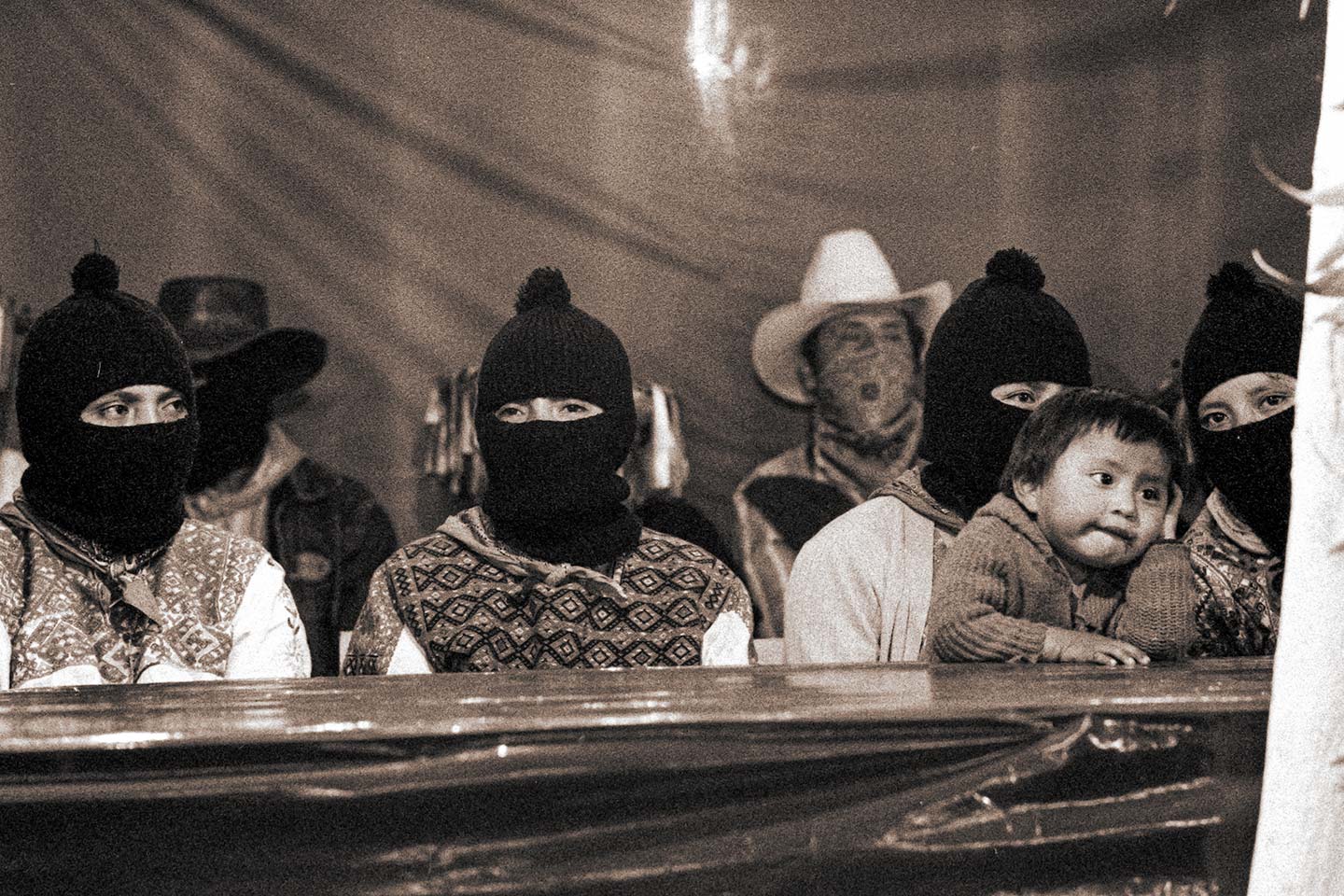
Chiapas is known as the Third World of Mexico and is very different to the modern capital of Mexico City. It is a state of open plains and dense forests. The population is predominantly indigenous, with over 90% living in poverty and earning less than minimum wage. More than half suffer from malnutrition and the starvation rate is 80%. The main food source is the meager produce from corn and bean crops cultivated on their own land, supplemented by home-grown coffee. Half of the houses have no running water and only one in three homes have electricity. The NAFTA agreement would only aggravate this already dire situation by bringing in cheaper produce and making it impossible for the farmers of Chiapas to sell their corn. Unable to endure any longer, the people took up arms in protest. ‘Ya basta! (Enough is enough!),’ they yelled.
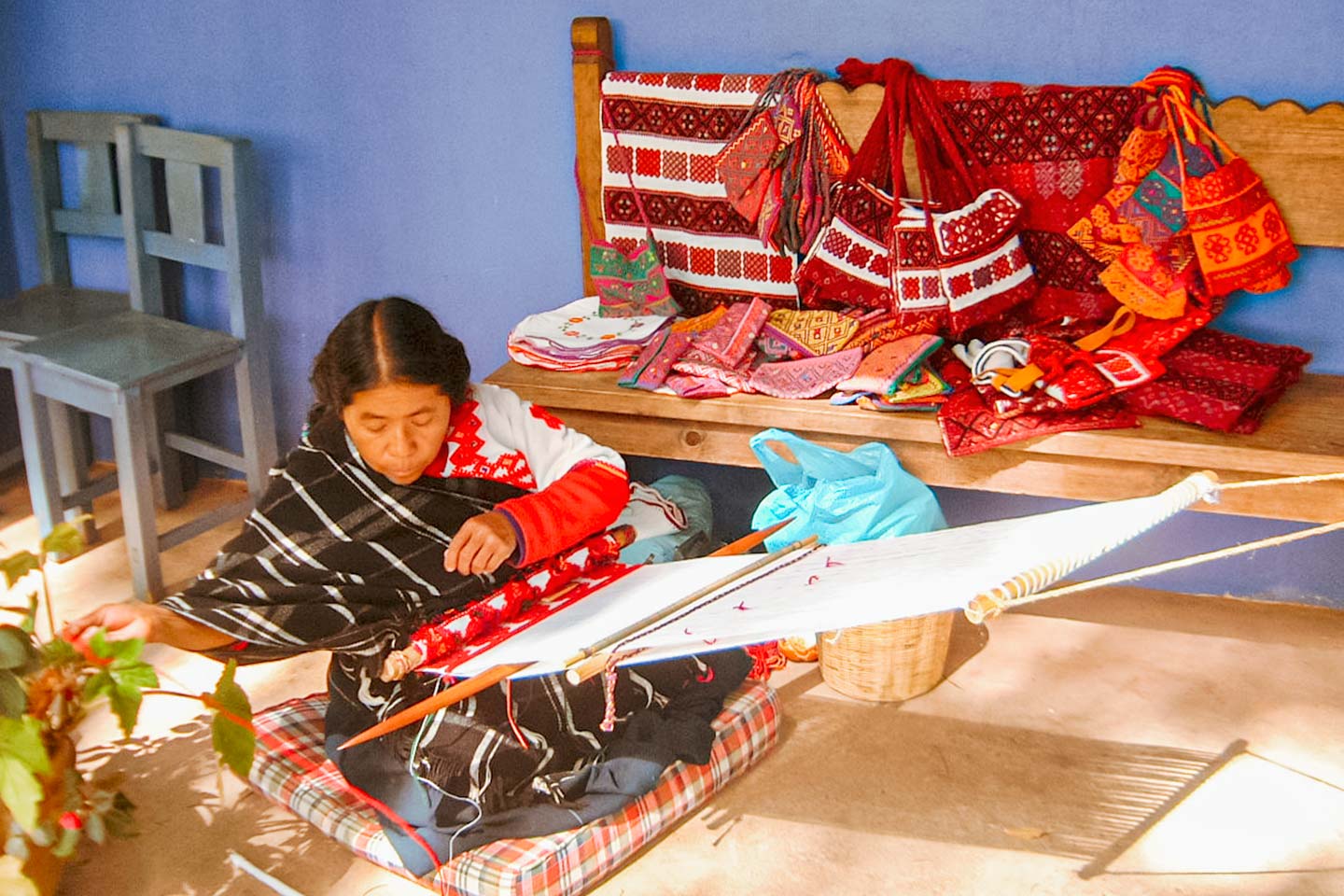
‘We have believed for centuries that the government would fulfill the promises they made to us. But they have not. If we do not fight now, our children will suffer the same fate,’ declared the EZLN. They stated that the government had continued to betray them, failing to return the communal land and fulfil other promises made to the indigenous people. Taking advantage of the government forces reduced vigilance during the new year’s celebrations, the EZLN captured San Cristóbal de las Casas and six other cities. The government sent our reinforcements, and fighting ensued until a ceasefire was agreed to on the basis of the government promising to respect the indigenous people’s culture and autonomy.
The need for armed protest was indicative of how far the party in power had strayed from the ideological principles of the Mexican Revolution. PRI lost the support of the majority and in 2000, the opposition party was voted in and they lost their hold on government. In 2001, the Zapatistas marched on the capital in peaceful protest. Around one million sympathizers and supporters of the rights of indigenous people came out to joined the protest. The female commander, still masked, represented the EZLN in an address to Mexico’s Congress of the Union. While in many countries, it would be unthinkable to have an anti-government guerilla leader address members of congress, in Mexico, it is just another aspect of this fascinating political climate.
The need for armed protest was indicative of how far the party in power had strayed from the ideological principles of the Mexican Revolution. PRI lost the support of the majority and in 2000, the opposition party was voted in and they lost their hold on government. In 2001, the Zapatistas marched on the capital in peaceful protest. Around one million sympathizers and supporters of the rights of indigenous people came out to joined the protest. The female commander, still masked, represented the EZLN in an address to Mexico’s Congress of the Union. While in many countries, it would be unthinkable to have an anti-government guerilla leader address members of congress, in Mexico, it is just another aspect of this fascinating culture.


Visiting the autonomous zone
In January 2004, the tenth anniversary of the uprising, I learned that the Zapatistas were holding a commemorative gathering in the Zapatista Autonomous Municipalities to mark the anniversary. I took a plane from the capital to San Cristóbal de las Casas and walked the streets of the city. I dropped by a shop selling Zapatista merchandise where I’d been told I could get a message to the command center. Three days later I returned and was told I had permission to visit the autonomous zone.
I took a taxi deep into the mountains. We passed several military checkpoints but we were never stopped. This was unusual and was due to a desire to avoid any trouble during the anniversary. We drove deeper still, and after around 30 minutes we came across a large sign; ‘You are in Zapatista territory in rebellion. Here the people command and the government obeys,’ it said in Spanish. We had reached the rebel-ruled Zapatista Autonomous Municipalities.

Further along, a gate marked the official entrance. I showed my passport and entered. After completing the luggage inspection, I headed to the outside theater. The theater was about 100 meters from the entrance, located at the bottom of a slope. This was the location for the commemorative gathering. A school and a meeting hall stood on the slope leading down to the theater. A mural on the wall depicted a masked-woman carrying a baby and shouldering a weapon. There were also paintings of Zapatista, and the Cuban revolutionary hero Guevara.
A local shop was selling Zapatista masks so I tried one on. The wool material made it unbearably hot and stuffy for the subtropical climate. But being a mountain region and 2000 meters above sea level, it could be a practical way to keep out the cold. The mask featured a pom-pom on the top, which gave it a cute appearance.
Not long after the uprising, an American reporter asked one of the leaders why the EZLN wore balaclavas. “To ensure that no one stands out as a leader,’ responded the commander. ‘We lead by a collective, not by dictatorship.’ Their decision to hide their face is rooted in democratic principles. It’s also an effective way to keep their identity safe from government forces.
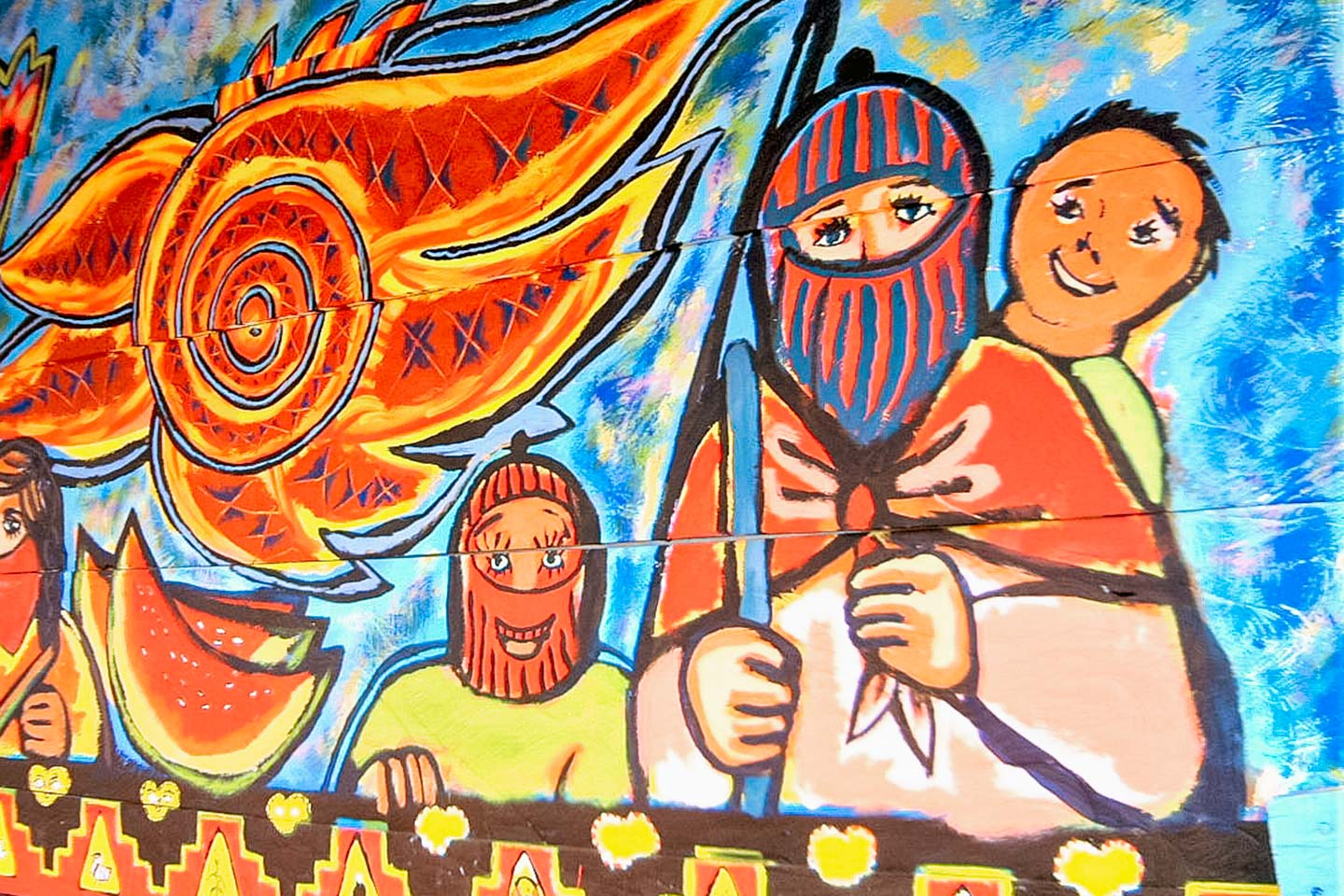
On the stage sat masked guerilla leaders. Indigenous men wearing traditional white costume and straw sombreros decorated with colorful ribbons and other locals began to gather. The female leader of the guerilla stood and gave a speech on celebrating the 10th Anniversary. The speech was followed by a dance performance. Women dressed in traditional costume dance to the music of the marimba, a folk instrument similar to the xylophone. The audience watched and applauded from their seats on the grassy slope and after a while, went down to the square in front of the stage to join in the dancing.
If the government invaded now, the Zapatistas would stand no chance. The government has invaded in the past, but were defeated and turned back by the guerillas who had the advantage on the ground. It’s strange to think of coffee being produced in a region filled with so much tension.
Currently 250,000 people live in the Zapatistas Autonomous Municipalities. Some farms are jointly managed and form cooperatives to export coffee overseas. It’s quite possible that coffee produced by the guerilla forces is being imported into your country.
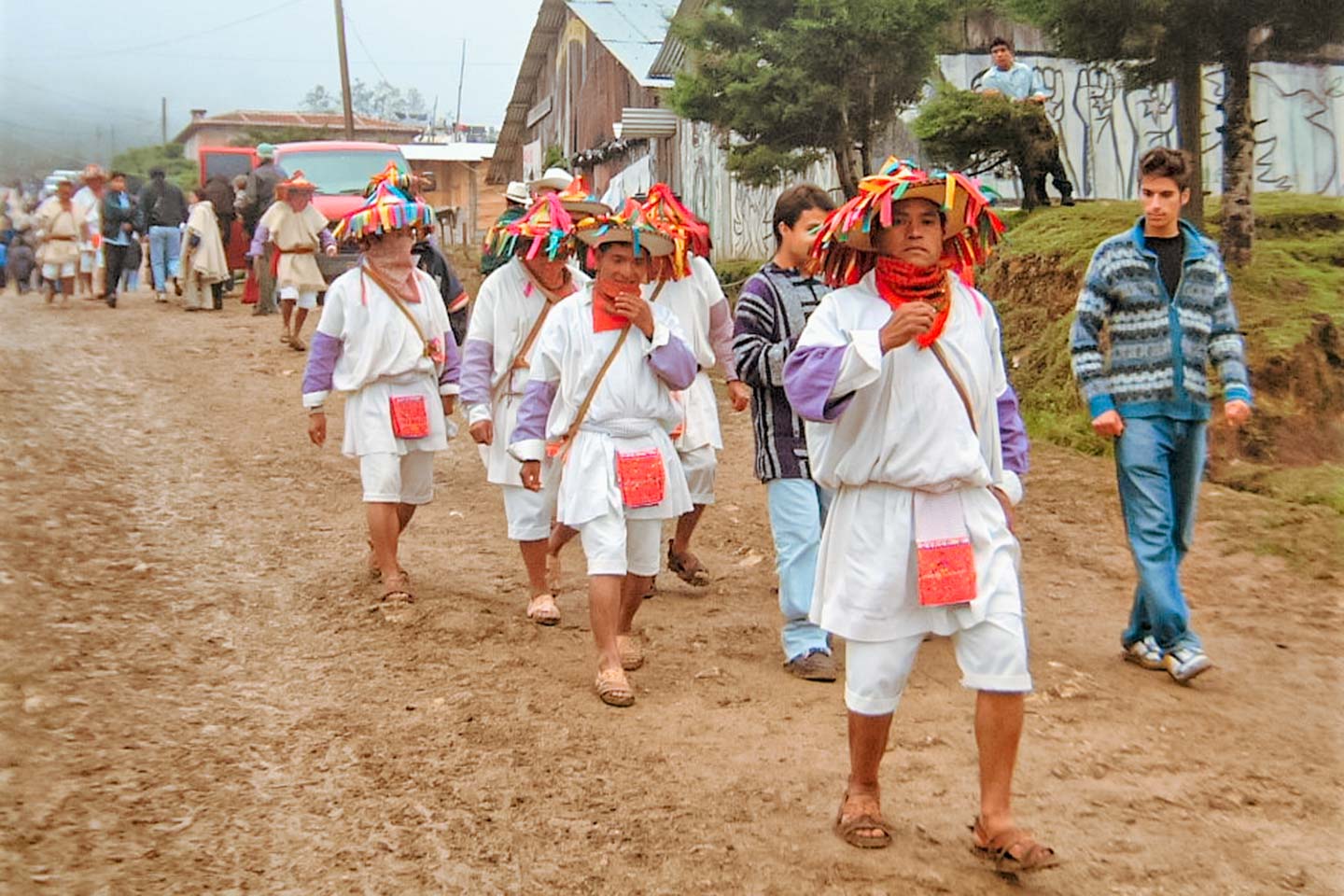

Coffee infused with the flavor of the revolution
Coffee producers in Mexico are also distinguished by how they have embraced coffee certifications for both Fair Trade and organic. A significant number of producers grow organic coffee. When INMECAFE collapsed in 1989, some producers responded by forming their own cooperatives to replace the role of the government, helping to organize the industry and offer financial and technical support. The cooperatives also encourage organic farming. Taking the initiative and coming together to help the community instead of relying on the government is another lasting legacy of the ideological principles of the Mexican Revolution.
Coffee producers in Mexico are also distinguished by how they have embraced coffee certifications for both Fair Trade and organic. A significant number of producers grow organic coffee. When INMECAFE collapsed in 1989, some producers responded by forming their own cooperatives to replace the role of the government, helping to organize the industry and offer financial and technical support. The cooperatives also encourage organic farming. Taking the initiative and coming together to help the community instead of relying on the government is another lasting legacy of the ideological principles of the Mexican Revolution.
Mexico is the ninth largest producer of coffee in the world. 80% of that is for export. Yet this amounts to less than 1% of the global total. The proximity to the US means that the majority is exported there, or to EU countries, which are also countries where organic produce is in demand.

Coffee from the Chiapas State has been awarded the Cup of Excellence, highly-acclaimed for both the aroma and mouthfeel. A bout of rust disease in 2022 caused devastating damage to the industry, but it is gradually recovering and exports are growing.
The current President, Andrés Manuel López Obrador, brings policies that align with the spirit of the revolution more closely than any leader in Mexico’s post-revolution history. The legacy of the revolution continues to inspire, and its enduring spirit can be tasted in every sip of Mexican coffee.
